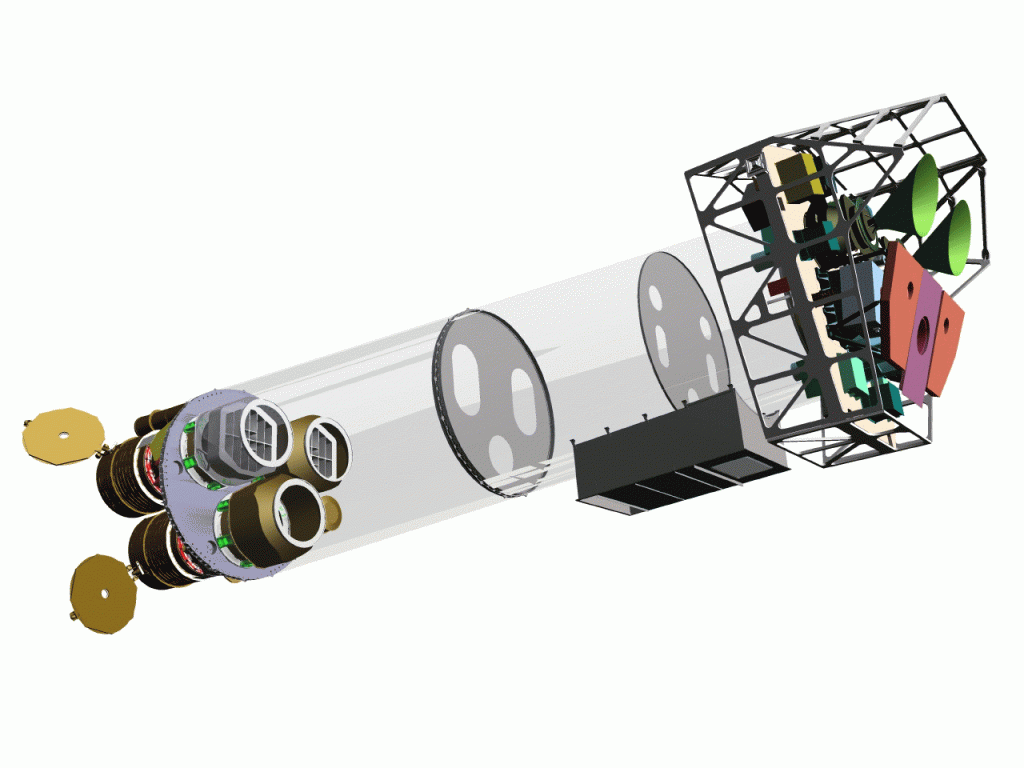Launched from Kourou, French Guiana on 10 December 1999, the European Space Agency’s X-ray Multi-Mirror satellite XMM-Newton is the most powerful and sensitive X-ray telescope ever placed in orbit. The mission is helping to solve many cosmic mysteries of the violent Universe, increasing our knowledge of very hot objects created when the Universe was very young. It will help solve many mysteries, ranging from black holes to the formation of galaxies.

Credits ESA/D. Ducros
Reference: XMM-Newton Users Handbook
XMM-Newton is the most sensitive X-ray observatory ever put in space. Its high quality focusing mirrors and battery of instruments enable it to achieve the following:
- Investigate spectra of cosmic X-ray sources with a limiting flux of 10-15 erg cm-2 s-1
- Perform sensitive medium-resolution spectroscopy with resolving powers between 150 and 800 over the wavelength band 5 – 35 Å (350 – 2500 eV)
- Broad band imaging spectroscopy from 150 eV to 15 keV (0.8 – 80 Å)
- Simultaneous sensitive coverage of the wavelength band 1700 to 6500 Å through a dedicated co-aligned optical monitor
There are three scientific instruments aboard XMM-Newton:
- European Photon Imaging Camera (EPIC): Three cameras register extremely weak X-ray radiation;
- Reflection Grating Spectrometer (RGS) “fans out” the various wavelengths indicating the exact condition of individual elements, such as oxygen and iron;
- Optical Monitor (OM) is a very sensitive optical/UV telescope of 30 cm diameter.
The three scientific instruments on board XMM-Newton will reveal the deepest secrets of a source, its chemical composition, temperature and even the velocity of the source.

Credits: Dornier Satellitensysteme GmbH.